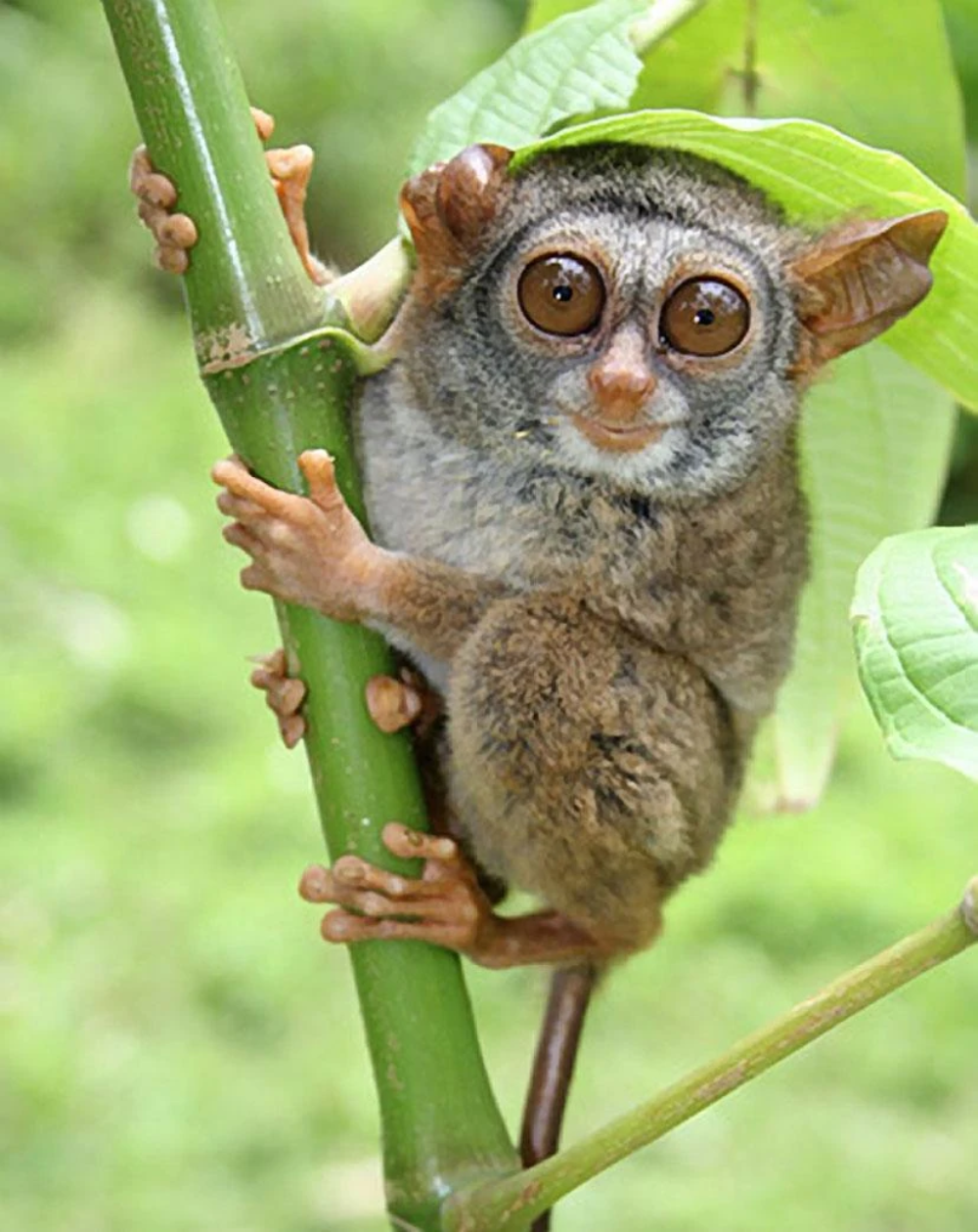The Siau Island tarsier (Tarsius tumpara), a diminutive and enigmatic primate, is an extraordinary species endemic to Siau Island in Indonesia. This island, part of the Sangihe archipelago, hosts a unique array of flora and fauna, with the Siau Island tarsier standing out as one of its most captivating inhabitants. Characterized by its large eyes, elongated fingers, and remarkable agility, this nocturnal creature offers profound insights into primate evolution and biodiversity conservation.
Taxonomy and Physical Description
The Siau Island tarsier belongs to the family Tarsiidae, a group of small primates. It also includes monkeys and apes. It was officially described as a distinct species in 2008, highlighting the richness of Indonesia’s biodiversity and the continuous discoveries within the animal kingdom.
Physically, the Siau Island tarsier is marked by its diminutive size, with an average body length of about 12 to 15 centimeters and a tail that can extend up to 25 centimeters. Its large, forward-facing eyes are adapted for nocturnal vision, allowing it to hunt and navigate in the dark. The tarsier’s fingers are elongated and tipped with adhesive pads, providing a strong grip on tree branches as it leaps from tree to tree. Its fur is generally a greyish-brown color, providing camouflage against the forest backdrop.
Habitat and Distribution
Siau Island, though small and volcanic, provides a complex and dense forest habitat that the tarsiers rely on. These primates are arboreal, spending most of their lives in the trees. The island’s tropical climate and dense vegetation offer ample food sources and shelter. However, the limited range of Siau Island tarsiers makes them particularly vulnerable to environmental changes and habitat destruction.
Behavior and Diet
Siau Island tarsiers are nocturnal and insectivorous. Their diet primarily consists of insects, but they are also known to consume small vertebrates such as birds and lizards. Their hunting strategy involves silently stalking and then leaping to capture prey with incredible precision and speed, thanks to their powerful hind limbs.
Socially, tarsiers are generally solitary or found in small family groups. They communicate through a series of vocalizations and ultrasonic calls, which play a crucial role in maintaining territories and social bonds. These calls are often inaudible to human ears, highlighting the complexity of their communication.
Conservation Status
The International Union for Conservation of Nature (IUCN) has classified the Siau Island tarsier as Critically Endangered. The primary threat to their survival is habitat destruction due to deforestation and land conversion for agriculture. Additionally, volcanic activity on Siau Island poses a natural threat, as eruptions can drastically alter their habitat.
Human activities, such as hunting and the illegal pet trade, also pose significant risks. Local folklore sometimes depicts tarsiers in a negative light, which can lead to persecution. Conservation efforts are urgently needed to protect this species and its habitat. This includes creating protected areas, enforcing anti-poaching laws, and conducting further research to better understand their ecology and behavior.
Conservation Efforts and Future Directions
Effective conservation strategies for the Siau Island tarsier must be multifaceted. Establishing protected areas on Siau Island is a critical step. These areas should be managed to ensure that they provide a safe habitat for tarsiers and other wildlife. Engaging the local community through education and involvement in conservation activities can foster a sense of stewardship and reduce human-wildlife conflicts.
Research is another vital component. Comprehensive studies on the tarsier’s population size, distribution, and ecological needs are essential for informed conservation planning. Genetic research can also provide insights into the species’ diversity and resilience.
Global awareness and support can amplify conservation efforts. International conservation organizations can collaborate with local groups to provide funding, resources, and expertise. Ecotourism, if managed sustainably, can also provide economic benefits to local communities while promoting the conservation of tarsiers and their habitat.
Conclusion
The Siau Island tarsier is a remarkable example of the biodiversity that thrives in Indonesia’s unique ecosystems. Its survival is intricately linked to the health of its habitat and the actions of humans. Protecting this small primate requires a concerted effort from local, national, and international stakeholders. By valuing and safeguarding the Siau Island tarsier, we not only preserve a species but also contribute to the broader goal of maintaining the planet’s biodiversity and ecological balance. As we deepen our understanding and appreciation of this tiny primate, we are reminded of the intricate web of life that connects all species and the profound impact of our actions on the natural world.










